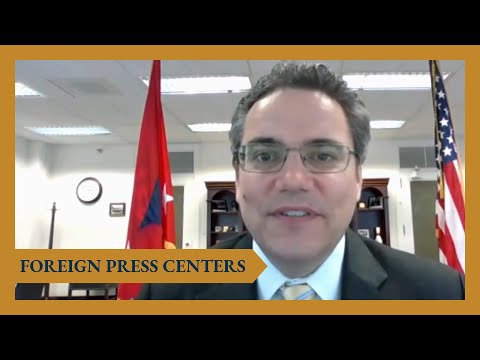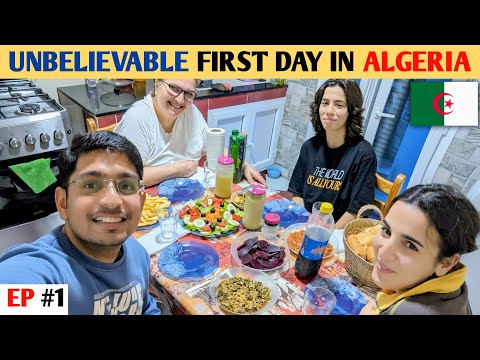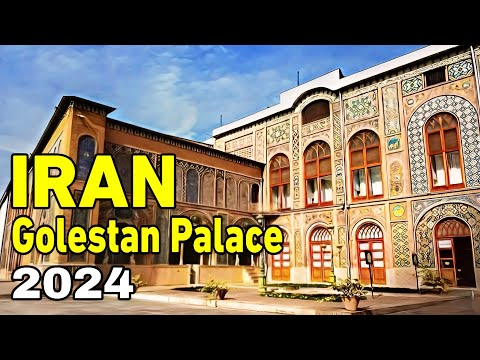Foreign Press Center Briefing on the "Reenergizing U.S. Travel and Tourism"

MODERATOR: Good afternoon and welcome to today’s New York Foreign Press Center briefing. My name is Daphne Stavropoulos and I am today’s moderator. It’s a pleasure and a privilege to introduce our distinguished briefer, Grant Harris, the Assistant Secretary of Commerce for Industry and Analysis. Assistant Secretary Harris will discuss the National Travel and Tourism Strategy that the Department of Commerce released on June 6th. It lays out an ambitious five-year goal of increasing American jobs by attracting and welcoming 90 million international visitors who, it’s estimated, will spend $279 billion annually by 2027. This briefing is on the record. If you’ve not had the opportunity to do so,
please go ahead and put your full name and your media outlet so they appear on the screen. And following the Assistant Secretary’s remarks, I’ll open up the floor for questions. And with that, it’s a pleasure to turn the floor over to Assistant Secretary Harris. Thank you and welcome. ASSISTANT SECRETARY HARRIS: Thank you, Daphne. Thank you to my colleagues from the U.S. Government who helped arranged this.
I’m really excited to have this conversation and speak to you all about the National Travel and Tourism Strategy that was announced last month, so thank you for this opportunity. I want to talk about the strategy and the state of travel and tourism, the industry. There is a Tourism Policy Council that connects all of our departments and agencies across the U.S. Government, and it’s chaired by the Commerce Secretary Gina Raimondo.
This brings a whole-of-government focus to our efforts on travel and tourism, and it was this body that created the new strategy that was referenced. And the idea is to focus on increasing American jobs and growing the economy through travel, tourism, and outdoor recreation. We believe that this strategy is going to create a more robust and sustainable industry moving forward, which is a priority for the Biden-Harris administration. We owe great thanks in developing this strategy to industry and to many stakeholders who provided a lot of comments, a lot of ideas, and a lot of recommendations. This includes the U.S. Travel and Tourism Advisory Board and many stakeholders with whom we consulted in recent months in anticipation of creating this strategy. So it’s really informed by broad and extensive consultation
not just within the government but across industry and with a diverse range of stakeholders. For context, more than two years ago, COVID-19 forced an economic shutdown across the nation and the world, and that hit travel and tourism particularly hard. The industry is still working to recover. In 2019, 79.4 million visitors came to the United States.
That number fell to 19.2 million in 2020, so it dropped from 79.4 million to 19.2 million, a precipitous decline. The administration’s robust vaccine rollout efforts and effective travel policies, including a recent decision to eliminate pre-departure testing, have helped U.S. tourism start to rebound. But we have a lot of work to do to return all segments of tourism in the United States to pre-pandemic levels and to grow beyond those levels as well.
Let’s talk a little bit more specifically about what the strategy does. As Daphne mentioned, it’s got an ambitious goal of reaching 90 million international visitors by 2027, and we hope that that will come with an estimated spend of $279 billion annually. This goal is based, again, on recommendations, including from the Travel and Tourism Advisory Board. It’s an ambitious one that would support a lot of American jobs and welcome a lot of internaitonal visitors to this great country.
The strategy is centered on four pillars. The first pillar is to promote the United States as a travel destination. The second is to facilitate travel to and within the United States. The third: ensure diverse, inclusive, and accessible travel experiences. And the fourth is foster resilient and sustainable travel and tourism. We recognize in putting forward this strategy that the recovery of the travel and tourism industry has been uneven. Some regions and market segments in the United States,
including business travel, will need more help to bounce back. I want to talk for a moment about some of our objectives in implementing this strategy. We believe that as we improve travel, tourism, and outdoor recreation across the United States, that a few of these key elements of the strategy will be incredibly important. This strategy will, for instance, showcase tourism offerings across the United States. It will help state, local, and tribal governments identify opportunities to access funding, to have resources for technical assistance, to plan and build market and manage sustainable tourism economies.
It will also help streamline the entry process to the United States. The responsible entities for that are primarily the Department of State and the Department of Homeland Security. It will support travel and tourism workers’ access to child care, reliable transportation, and help us create career pathways, especially for people of color and for women. And as we work to build a stronger travel and tourism and outdoor recreation sector, we want to do so in a sustainable way that makes it more resilient and reduces its contribution to the climate crisis. And in our consultations with companies and the industry, we think that adopting these mitigation measures will be good for their bottom lines and for their profits as well.
In advancing these goals, as I mentioned before, it’s been a very collaborative process, and it will continue to be. As we implement this strategy, we’re going to be working with industry, labor organizations, state, local, and tribal governments, and Congress. We also want to work with our foreign partners, of course, and we want to think creatively and be innovative about how we help this sector grow. There are a few other things that I wanted to mention in addition to the strategy to give more context to the work that we’re doing in this space. We’re working with Brand USA, which is a public-private partnership that helps to market the United States as a travel destination and provides products and offerings that are meant to encourage visitation to the United States and help visitors find the right tourism products for them. This work will continue, and will be all the more important as we try to highlight a diverse array of products across the United States, including those in and connected with underrepresented communities.
This is building on ongoing work by the Biden-Harris administration that seeks to revitalize the travel and tourism industry, and I wanted to mention a few examples of that, too. The Commerce Department’s Economic Development Administration is distributing grants. They have distributed $510 million in formula funding to states and territories in the District of Columbia, and these are all supporting travel and tourism and outdoor recreation. This is thanks to Congress and the American Rescue Plan Act of 2021.
The Economic Development Administration is also now in the process of announcing competitive funding. They’ll be issuing $240 million total in competitive grants, and they have announced so far a little bit over $90 million of that amount. This is a place where the administration has been incredibly focused on current needs, especially coming out of the pandemic, and where Congress has been an incredible partner in allocating these funds, appropriating them, so that we can work together to provide tourism economies and important partners the resources that they need when they need it most.
To give a few examples, these types of funds have gone to marketing grants in some states to boost tourism to rural communities. Elsewhere, for instance, in Florida, these funds are being used to support marketing campaigns, which include international digital marketing so that we’re promoting online content in foreign countries. And to simplify this, it means helping states and other governments tell the story of what many amazing things are on offer for international visitors to come see and do when traveling to the United States.
I wanted to mention as well before closing out and taking your questions, we have a very important office within the Department of Commerce called the National Travel and Tourism Office, which puts out vital data and statistics to the industry. And those are used for the industry’s purposes to inform their private-sector decision making and their planning. This group is also responsible for many of the great policy ideas and the analysis that goes into things like this strategy, and they work day-in and day-out to enhance the international competitiveness of the U.S. travel and tourism industry. I would say, in closing, we are really focused on a widespread recovery in the travel and tourism industry. It’s going to take a lot of work across our government and with Congress and with stakeholders. And based on that, we think that we will be really well placed to tell
a very compelling and strong story about the many offerings and tourism products across this great and diverse country. We hope to see a massive increase in international visitors. And with that, I’d welcome any questions. Thank you. MODERATOR: Thank you so much for those opening remarks. We will take a few questions. Please raise – excuse me – your virtual hand and wait for me to call on you, if you have a question. Okay. I see Alexey. Go ahead, Alexey. QUESTION: Hello to everyone. Mr. Harris, the question is regarding visa policy.
Citizens of many countries for entering into the United States for tourism purpose to – the visa are obligatories. So how will you plan to achieve the goal if the, for example, the nearest closest slots in the U.S. embassy and consulates worldwide for the interview or submission of the application for visa is like January, February, March 2024? So it’s a long time of the waiting without any guarantee that the visa will be issued or the interview will be not postponed.
MODERATOR: Alexey, can you please just state your full name and your outlet for the transcript? QUESTION: My name is Alexey Osipov and I am the U.S. correspondent of Israeli Novosty Nedeli. ASSISTANT SECRETARY HARRIS: Thank you, Alexey. It’s a great question, and we’re thinking very hard about how we can get visa wait times down. One of the effects of the pandemic, as it hit the globe very hard, it also hit our embassies and our consulates hard and caused a lot of closures. And as they are reopening, it’s caused wait times that are much higher than what we would hope for. We’re working with the State Department and with others in the U.S. Government to think about
how those numbers can be decreased. The State Department is very focused on this, and their consular affairs and their colleagues are looking at what can be done. They’re an important part and an important partner in implementing this strategy. This is going to be something that we want to continue to work on so that we are facilitating travel to and within the United States, just as our stated goal is, and something that we want to see progress on going forward. QUESTION: Thank you.
MODERATOR: Thank you, Alexey. I’m also happy to connect you with the Bureau of Consular Affairs at the State Department for any follow-up questions. The next question will go to Alex. Alex, please go ahead and introduce yourself, name and outlet. QUESTION: Yes, Daphne. Thank you so much. This is Alex Raufoglu from Turan News Agency of Azerbaijan. Assistant Secretary Harris, thank you for the update on this topic. I have very quick question.
You mentioned a number of reasons, particularly the first reason comes to mind is COVID, why those numbers came down the past couple of years. But looking forward, do you think the war that is going on in Europe, launched by Russia, is or has been affecting this issue at all and if this is something you are looking at? And another question about the status of the work and travel program. Have you relaunched it fully and full capacity? Are you considering to increase? If I’m not mistaken there’s a quota or some – toward some countries, Central Asian, South Caucasian countries. Are you planning to increase number of people that might be able to take advantage of this program? Thank you so much again.
ASSISTANT SECRETARY HARRIS: Thank you. I think it was a connection issue, but on the second part of the question, what program did you reference? It cut out for just a moment. QUESTION: Oh, my apologies. ASSISTANT SECRETARY HARRIS: Could you please repeat that? QUESTION: Yeah, my apologies. It was about the work and travel program. It’s very famous in — ASSISTANT SECRETARY HARRIS: About the work and travel program, yes. QUESTION: Yeah, very famous in my part of the world, but — ASSISTANT SECRETARY HARRIS: Yes.
QUESTION: Yeah, thanks so much. ASSISTANT SECRETARY HARRIS: Okay. Thank you. Thank you for those questions. In terms of Russia’s aggression in the Ukraine and the war that they’ve started, I’m not aware of a direct link to visa wait times or travel and tourism as we’re talking about it in the context of this national travel and tourism strategy. Of course, though, this has caused energy prices to spike, it’s worsened inflation, it’s caused dramatic problems around the globe in addition to the loss of human life and the suffering. And this administration
has been seized with doing everything possible to try to bring an end to that war. In terms of the more specific question on visas, this is part of the conversation, and I’m hearing this a lot from industry. I continue to meet very regularly with important industry associations and corporations and small business – small businesses as well in this space, and they’re hearing that the visa issue is multifaceted. It’s tourism visas but it’s also the J-1s. It’s the worker programs. It is a multisided issue of thinking about
how executives can travel, how tourists can travel, how the workforce is supported. So I would say, to take a step back, what we’re hearing a lot from industry and what we’re focused on are addressing visa wait times and thinking about the workforce for the industry to make sure that there are – that there is – the current needs are met and that there is a pipeline going forward of great people ready to go, wanting to be in this industry and having the career pathways to do so. QUESTION: Thank you. MODERATOR: Thank you so much. The next question came in through the chat and I will read it aloud. It came in from Donghui Yu from the China Review News Agency of Hong Kong.
The journalist wants to know if – “Chinese tourists were – are important parts of the international tourism for the United States, but because of the pandemic and a deteriorating relationship, the two-way tourism between China and the United States was interrupted. Are there certain plans to resume tourism between the two countries and are you talking to your Chinese counterparts to recover it?” ASSISTANT SECRETARY HARRIS: Great. For this question, the Chinese Government has so much influence and direction with respect to where its citizens are traveling that it’s really a question more for Beijing to understand what they are looking for going forward. We in the past have helped in the – our industries had important partnerships with China to facilitate travel for Chinese tourists. When – if and when this is appropriate, in the days ahead, we’re open to having these conversations again. But I think the Chinese Government needs to signal more of its intention in light of the pandemic and its views as to the future for Chinese travel.
MODERATOR: The next question goes to David Smith. QUESTION: Hello there. Hi. Two questions. One, I wonder, in your job, how concerned are you that America seems to get a lot of bad publicity these days in the media, whether it’s gun violence, whether it’s political polarization and images of January the 6th flashing around the world, or myriad other things. Is there any evidence that that is putting some international tourists off visiting? And second on – maybe on a happier note, just out of curiosity, my assumption would be that lots of international tourists think first of New York, maybe Hollywood, maybe Florida for the sunshine. To what extent are you working on encouraging tourists to look elsewhere, to the now dreaded phrase, so-called “flyover states?” Are there efforts to kind of boost the popularity of – whether it’s Detroit, whether it’s Colorado, other places? ASSISTANT SECRETARY HARRIS: Two really important questions. On the first,
we’re seeing a lot of pent-up demand for travel to the United States and we’re really encouraged by that, particularly in the policies that we’re undertaking. With the vaccine rollout and having dropped the pre-departure testing, we anticipate seeing greater numbers of visitors coming, and we’re really excited for that. That pent-up demand is not just our own analysis, but what we’re hearing from industry across the board. With respect to the second question, this is a really important issue and an important aspect of the strategy. Our goal is to increase visitation across the board, but we specifically want to make sure that rural communities, underserved communities, less-visited sites – that a diverse set of tourism products are at the forefront of what we’re talking about. We are highlighting it all, and as we do it, it’s not just about showcasing it and telling the story, but it is also about working with underserved communities and outdoor recreation sites to make sure that they’re ready for higher numbers of tourists.
That can mean a lot of different things. So an example would be working with a local tourism economy or a gateway community, say nearby a federal park or nearby a really popular – what could be a popular site, and thinking about community-based management tactics and techniques and best practices. We have a variety of different grants, including the EDA – Economic Development Administration – grants that I mentioned. Some of those are geared
towards outdoor recreation in particular. We work with industry and coalitions for messaging on how to sustainably support these types of communities and support these products. And so the short answer – though I’ve already made it a very long answer, the short answer is this is a focus because we want to increase visitation to all types of sites, especially in under-represented communities and outdoor locales. MODERATOR: Thank you so much. The next question will go to Pearl. Pearl, please, go ahead. QUESTION: Thank you so much, Daphne, for this opportunity, and Mr. Harris, it’s a pleasure to talk to you and hear what you’ve been sharing. My concern is somewhat similar to what David was talking about, but maybe with a slightly different approach. So
not everywhere out there in reports, in media – and I’m speaking from an African audience’s perspective – is the sentiment pro-America, and so my question to you would be: Even before COVID, even maybe the Obama – as far back as maybe five, seven years ago, we saw a lot of traffic of U.S. tourists to the African continent. But at the moment, given COVID restrictions, given the pulling back of some of your consular service within the State Department and so on, where is that flow also from the African continent to the U.S.? Because the U.S. is not the most – it’s not the cheapest destination for some of the tourists, and like what David was saying, yes, the Big Apple and some of these bigger cities. So I’m interested to find out what is it that your office and perhaps your public diplomacy colleagues are doing in terms of trying to change the narrative, the sentiment against the United States that may be out there, particularly with the younger population, of which Africa has a predominantly younger population. So perhaps try to let us know what are you doing
in other ways – other than visa – changing this perception and then increasing this two-way traffic, particularly between the U.S. and Africa. Thanks. MODERATOR: Pearl, please, if you could just state your name and your media outlet for the — QUESTION: Oh, sure, of course. My name is Pearl Matibe and Power FM 98.7 out of South Africa. Thanks. ASSISTANT SECRETARY HARRIS: Great. We want to welcome as many African visitors as possible, same for – for many region across the globe. But I would say with respect to Africa in particular and your question, one of the amazing things – the many amazing things – that we are able to showcase about the United States is that the offerings are so diverse, and it includes many different price points, it includes many different interests and preferences that can be accommodated, whether it’s more rural or urban or outdoor or less populated or less traveled to.
There are a lot of different ways to experience the United States, and we’re trying to tell that story as effectively as possible. We’ve been analyzing the data as much as possible, we’ve been talking with international partners, talking to industry, and working with Brand USA, as I mentioned, which is really a key element of doing that. They’re being very creative on social media and elsewhere to try to highlight individual stories of influencers out and about in less traveled-to destinations, of thinking about the many different things that are on offer. You’re right, especially as you’re talking about the continent of Africa, and we’re well aware. Africa will be a quarter of the globe’s population by 2050. It’s a fast-growing, young, dynamic population. It’s exactly the type of population we want to engage with,
and we want to be thoughtful about welcoming as many visitors to the United States as possible. MODERATOR: We are very short on time. I see one hand raised and this might be it. Yan, can you introduce yourself and your outlet, please, and ask your question? QUESTION: Yes, thank you. Yan Jin with Caijing Magazine. My question is that you
talk about that there’s a lot of pent-up demands, and actually when you travel there’s a lot of cost – especially, the June inflation number just came out and it soared to the new high. So can you explain how inflation’s going to impact tourism? Is this your concern? Thank you. ASSISTANT SECRETARY HARRIS: Thank you. Inflation is a top priority of President Biden and his administration. And we know, for instance, that this is hurting American families, and he is seized with doing all that the administration can.
When it comes to international travel, as I was explaining, we’re seeing a lot of pent-up demand and a lot of desire to travel to the United States, and we’re really hopeful that these numbers will continue to pick up. As I was mentioning also, there are a lot of different products, places to visit, price points, ways to travel around the country. So we’re still hopeful that we can meet this ambitious number over the next five years, and we’re going to keep doing everything that we can to welcome visitors and hit that goal.
MODERATOR: So being respectful of your schedule and I think we’re out of time, we appreciate you joining us today, Assistant Secretary Harris. Thank you for the time. Thank you to all the journalists who joined us. Today’s briefing was on the record. And we will post a transcript, and I will email it to all the participants as well at the end of the day. Thank you and good afternoon.
ASSISTANT SECRETARY HARRIS: Thank you so much, everyone.
2022-07-16 19:36


